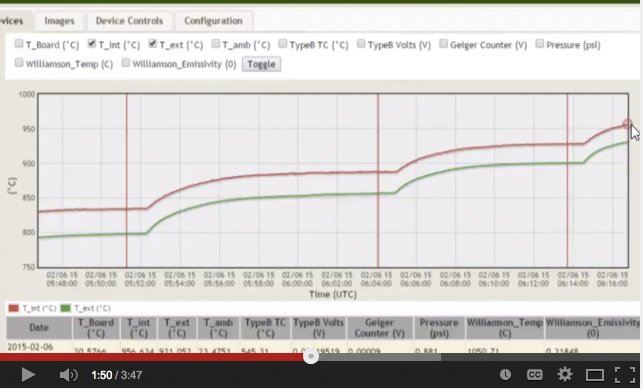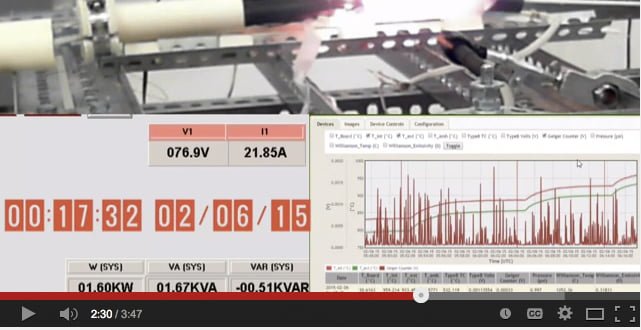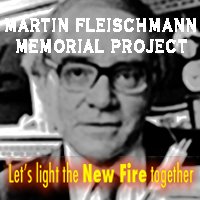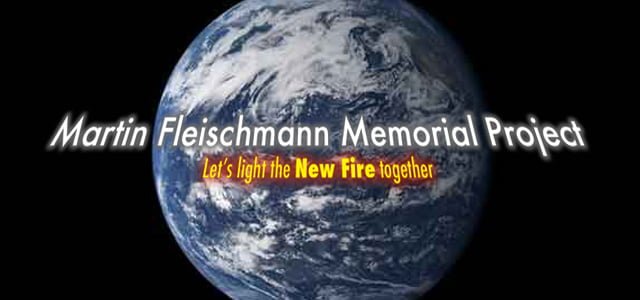Live Open Science at the Martin Fleischmann Memorial Project had a high-intensity moment today as they tested a sealant on the ends of the Alexander Parkhomov type experiment.
Watch video of the cell-popping pressurized reactor in Bang! Safety First on the Martin Fleischmann Memorial Project Youtube channel.
The video documents how just two minutes before the test reactor shell shattered, MFMP members Bob Greenyer, Ryan Hunt, and Alan Goldwater erected a “blast shield” to protect against any debris should a failure occur.
“Yes, cause at some point we’re going to have some molten lithium in there and I’m not sure I want that – or even vapor lithium – coming at us, so perhaps we should retire to a different distance?” Bob Greenyer can be heard saying on the video.
Published on Feb 6, 2015 from Martin Fleischmann Memorial Project Youtube channel:
After successfully testing a new sealing method for simple reactor core manufacture, MFMP team members next experiment passes through the “Parkhomov threshold”, that is temperatures above which Dr. Alexander Parkhomov reported first seeing ‘excess heat’. As a precaution, the team erect a blast shield… and not a moment too soon!
NOTE: Look at the area of the ceramic outer tube just after the event.
As Francesco Celani says – Safety, Safety, Safety.
The video shows the effectiveness of Aluminum ferrule based swageloks sealing the 1/4 inch reactor tube to high pressures. Simple, fast, cheap, repeatable
It is not yet clear what exactly happened at this time. The test of the compression sealant was successful, and the endcap was secure. A surge in temperature is then followed by the reactor shattering.
“At least we know we have pressure.” says Ryan Hunt, just seconds after the pop.


The event concluded a week of scheduled tests, broadcast live on their Youtube channel.
From the February 3, 2015, Ryan Hunt posted:
Bob Greenyer and Alan Goldwater are here to help execute a rapid series of live experiments. We have assembled all the test equipment we had hoped for. Now it is time to see how they work together. We have an ambitious plan with several tests, but the thermal assessment is the top priority. In the event that we run into some serious snags, be prepared for the plans to change and tests to be dropped.
The Time Line of events was forecast as:
Tests are defined in more detail below.
Monday, Feb 2
Team assembles, Test equipment set up, integrated, and prepared. Lots of reading the manuals!
Tuesday
Starting at 9 am local time, or so.
Test 1: Calibration with Thermocouples, Optris camera, and Williamson Pyrometer.
livelink: http://youtu.be/0DY4TJmCJS8Test 2: Fat coil dog bone with internal heat source
Test 3: Assessment of Alan’s calibrated alumina temperature sources
Wednesday
Test 4: Powder Test in sealed Alumina tube
Tests 5, 6, 7, …: Powder Test in sealed Alumina tube
Iterate and try different ideas while we have the team assembled
Thursday
Test X: High Temp Inconel Heater Dogbone Calibration
Other tests as deemed worthy
Friday, Feb 6
Team Leaves, wrap up
Beyond:
Discuss and write up
Whatever happened in the test today, it is a reminder that anybody contemplating experiments in energy must proceed with the utmost caution.
Practice science responsibly and gather experienced partners for safe and successful results.
 The Live Open Science of MFMP utilizes the digital space to communicate and collaborate on a global. The research is focused on discovering the nature of a source of dense, ultra-clean energy from a plentiful fuel.
The Live Open Science of MFMP utilizes the digital space to communicate and collaborate on a global. The research is focused on discovering the nature of a source of dense, ultra-clean energy from a plentiful fuel.
What no institution in the U.S. dare do, the MFMP collective puts together on fly specks.
Be a part of the MFMP Live Open Science collective with your financial support..
PARTIAL transcript of Reactor Failure Event Feb 6
00.08 “Yes, cause at some point we’re going to have some molten lithium in there I’m not sure I want that or even vapor lithium coming at us, so perhaps we should retire to a different distance?”
” ..can’t …flying particles is what I had in mind …(?)”
“I can hide behind the monitor there, but Ryan, from where your sitting, it’s probably easiest here since you’re in the line of fire…”
00:38 “We’re just erecting a blast shield out of respect.”
“Gonna do the infrared camera filter thing,
00:52 OK ready, it looks a bit like this …
ready, it looks a bit like this …
“Well, the photos I’ve taken look pretty much bang on,
so we’ll get those over to you at some point.”
01:13 “The Williamson is reading about 1027 degrees approximately.”
01:25 “On the chart here, we’re seeing 952.”
It’s interesting that ….
01:39 “It’s 797 to 834, about 38 degrees difference,
01:57 and now it’s 927 to 956.”
Ryan Hunt: “That’s 25. So yeah, that’s a little closer.”
Bob Greenyer: “What’s the Geiger counter doing? Not a lot….”
2:20 – 2:29 silence
2:30 POP!
“Well that was exciting!”
“Did you hear it?”
“Was the shield a good idea?”
“The shield was a good idea.”
“The shield was a good idea.”
“We have no silicon carbide element, and we have a vaporised reactor. So, was that a runaway reaction? We were in the domain of Parkhomov?”
“Well at least we know we have pressure.”
“Even though we shouldn’t have pressure at that temperature…”
Well, no, … the last …
“Oh my, that was exciting. Oh guys, that vaporised, it utterly, utterly vaporised, ….”
“Well, time to go and take some closer up pictures.”
“Well, bear in mind that there’s lithium-aluminium-hydride around, so perhaps we should open a few doors.”
“Does anybody know what that is supposed to smell like?”
“Uh, death.”
Related Links
Martin Fleischmann Memorial Project at QuantumHeat.org
Alexander Parkhomov type experiment.
Cold Fusion: the “heirs” of Fleischmann candidates for the Nobel Peace Prize


Having an explosion we think of a burst of gas. What kind of gas can be formed? The ceramic contains Al2O3. Such means that with the hydrogen of lithiumaluminumhydride water can be formed in an oxido-redox reaction and steam at the temperature of the experiment. I think here of a “thermite” mixture. For thermite see WIKIPEDIA.